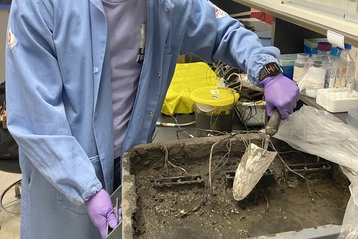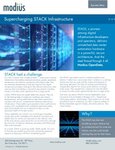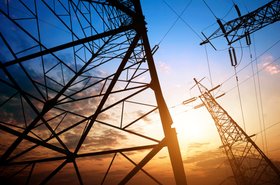Researchers at Northwestern University have shown that soil microbes can provide continuous energy to power the Internet of Things (IoT).
The size of a paperback book, the fuel cell can operate underground, harvesting enough energy to power sensors used in agriculture and other remote IoT applications, instead of having to load them with lithium batteries.
"We’re not going to power entire cities with this energy," said George Wells. "But we can capture minute amounts of energy to fuel practical, low-power applications.”
Wells, a Northwestern professor of civil and environmental engineering, is a senior author on the study Soil-Powered Computing: The Engineer's Guide to Practical Soil Microbial Fuel Cell Design, published by the ACM (Association for Computing Machinery).
Providing continuous energy, the cell would give sensors a longer lifetime than conventional lithium batteries, as well as creating a much smaller environmental footprint using less rare materials, and creating less electronic waste.
Led by undergraduate researcher Bill Yen, now a PhD student at Stanford, the team buried the cell and used it to power sensors tracking soil temperature and passing animals. The cell also provided power to transmit data over radio to an IoT network.
The cell worked in wet and dry conditions and lasted more than twice as long as lithium batteries.
The study is a free guide, including designs, tutorials, and tools so others can repeat and build on the technology.
“The number of devices in the Internet of Things (IoT) is constantly growing,” Yen told Northwestern Now. “If we imagine a future with trillions of these devices, we cannot build every one of them out of lithium, heavy metals, and toxins that are dangerous to the environment."
Soil microbes break down soil and produce energy, he said: "As long as there is organic carbon in the soil for the microbes to break down, the fuel cell can potentially last forever.”
Farmers are being encouraged to turn to precision agriculture where technology manages the process, but this is limited by the capabilities of sensors. “Solar panels don’t work well in dirty environments because they get covered with dirt, do not work when the sun isn’t out and take up a lot of space," said Yen. "Batteries also are challenging because they run out of power. Farmers are not going to go around a 100-acre farm to regularly swap out batteries or dust off solar panels.”
Yen's team created fuel cell designs that would keep the buried soil hydrated and oxygenated, and tested them over a period of nine months. The final design has a vertical cathode that extends above ground, with a tube to aerate the soil, and a horizontal anode deep below ground where there will always be moisture,
It is made from materials that can be bought from a hardware store, and a future version will also be bio-degradable.
Nature-powered computers have been proposed before. In 2022, scientists at Cambridge University powered an Arm Cortex processor for a year, on a glass vial the size of an AA battery containing water and algae, which was exposed to sunlight.







